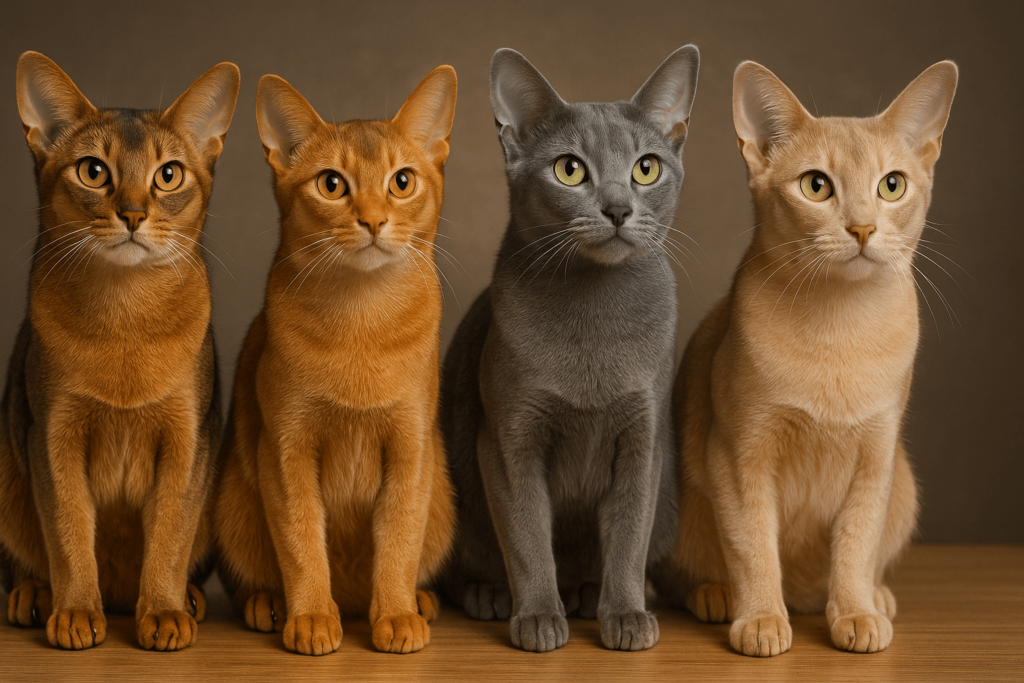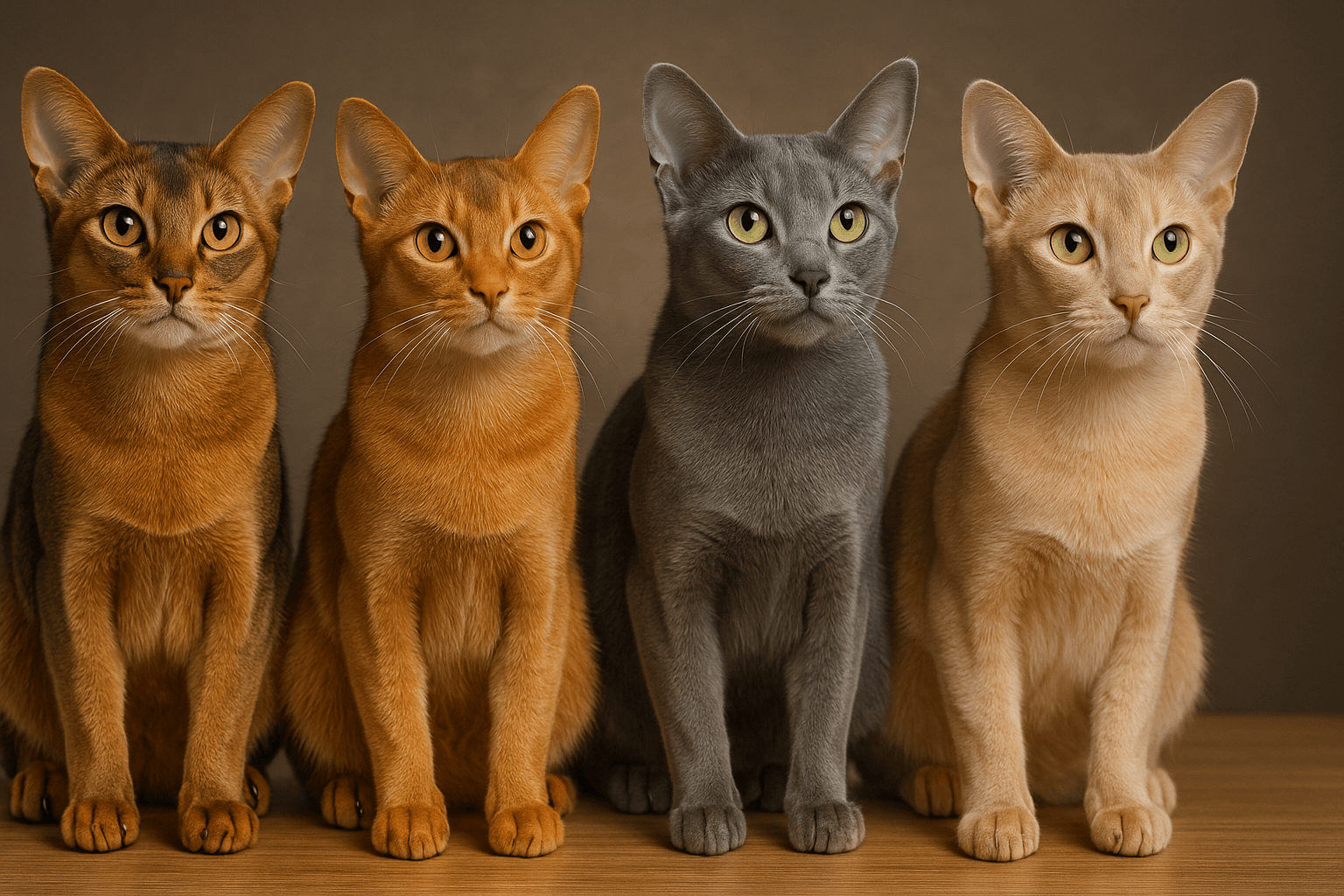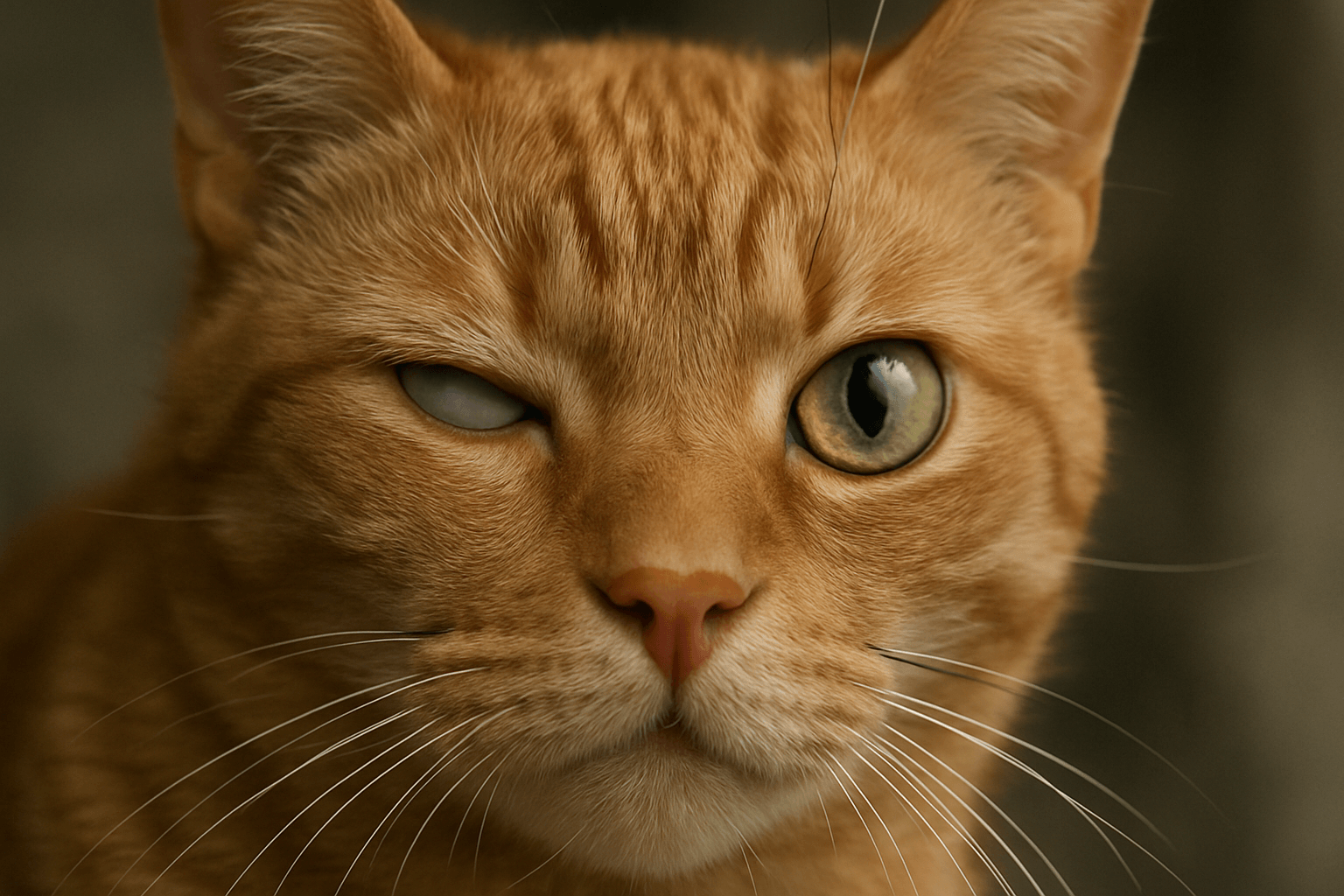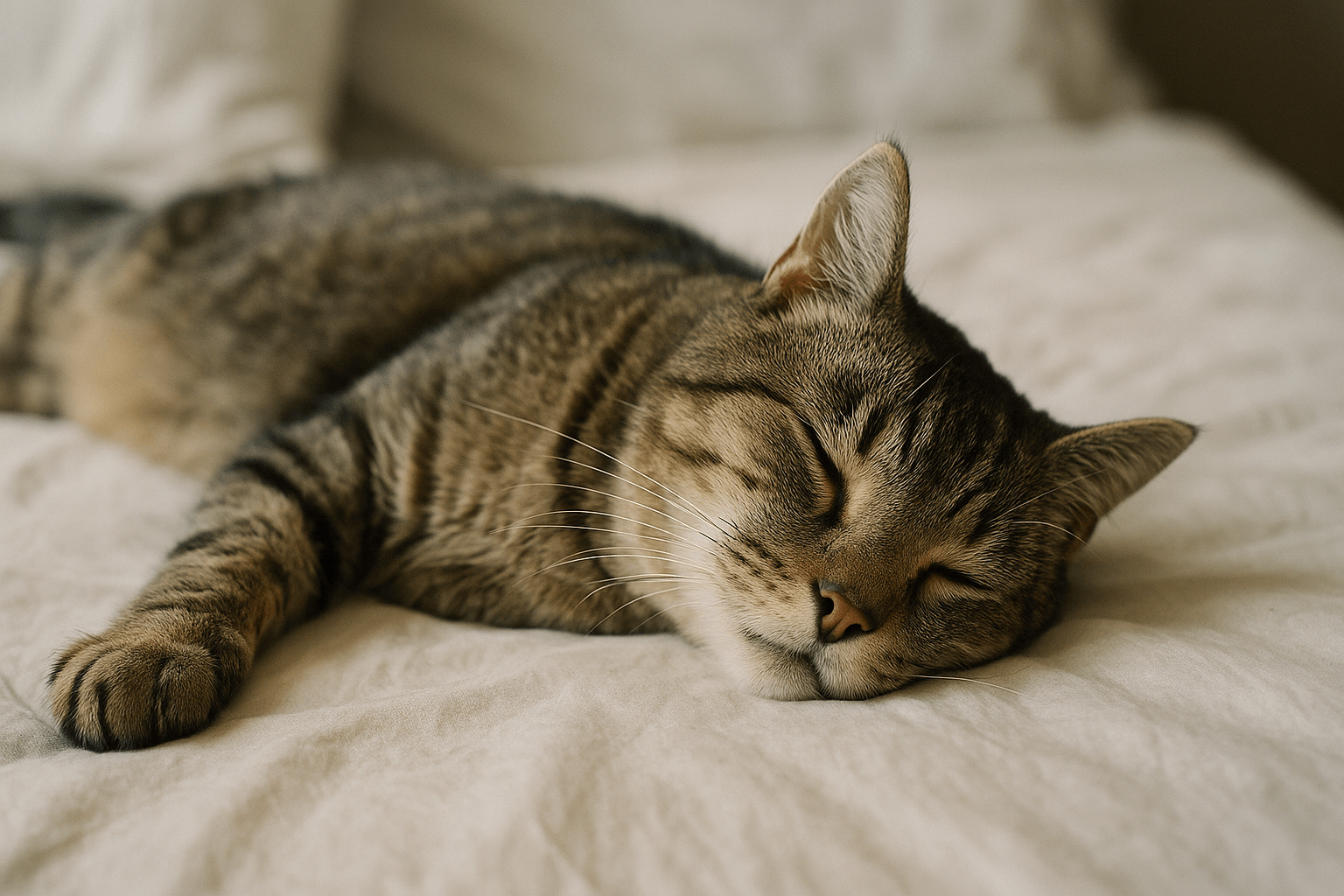Why Do Abyssinian Cat Colors Matter? The Beauty Behind Their Unique Coats
Abyssinian cats are living works of art — sleek, elegant, and radiating an almost wild grace. But what truly sets them apart isn’t just their alert ears or athletic build — it’s their coat. The mesmerizing, ticked fur of the Abyssinian comes in a spectrum of rich, nuanced colors, each telling a story of genetics, heritage, and natural selection. Understanding Abyssinian cat colors isn’t just about aesthetics — it’s about appreciating the science, history, and personality behind every shade. Whether you’re considering adopting one or simply adore their beauty, this guide reveals everything you need to know about their iconic hues.
The Genetic Foundation of Abyssinian Cat Colors
The stunning appearance of Abyssinian cats is the result of a rare genetic trait known as “ticking” — a pattern where each hair carries multiple bands of color. This isn’t stripes or spots — it’s a subtle, layered effect that gives their fur a shimmering, luminous quality. Here’s what makes their coloring so unique:
Ticked Fur Pattern: Each individual hair has alternating bands of light and dark pigment, creating a salt-and-pepper glow that moves with the cat’s motion.
Agouti Gene Dominance: This gene prevents solid coloration, forcing the hair to display multiple tones — a hallmark of the breed.
Limited Color Variants: Unlike other breeds, Abyssinians have only a few officially recognized colors, making each one rare and distinctive.
No Tabby Stripes: Despite their wild look, Abyssinians lack visible stripes or spots — their pattern is uniform and fine-grained.
Color Depth Varies by Light: Their coat appears to change hue depending on sunlight, angle, and environment — making them look almost alive.
This genetic precision is what makes Abyssinian cat colors so coveted. It’s not just pigment — it’s a biological masterpiece passed down through generations.

Officially Recognized Abyssinian Cat Colors
The major cat registries — including TICA, CFA, and FIFe — recognize a small but elegant palette of Abyssinian coat colors. Each has its own charm and historical roots. Here’s what you need to know:
Ruddy (Classic Brown): The original and most common color — rich, warm brown with black ticking over a warm amber base.
Blue: A soft, cool gray with slate-gray ticking over a lighter gray undercoat — often mistaken for a Russian Blue at first glance.
Sorrel (Cinnamon): A warm, reddish-brown reminiscent of chocolate or cinnamon spice — highly prized for its rarity and depth.
Fawn: A delicate, pale beige with soft pinkish-taupe ticking — the lightest of the recognized colors and exceptionally gentle in appearance.
Black: A rare variant with solid black ticking over a dark base — sometimes seen in non-pedigree lines but not always accepted in shows.
These colors aren’t just labels — they’re expressions of lineage and breeding standards. Each shade has been carefully preserved and refined over decades of selective breeding.
Check this guide 👉Bengal Cat Colors: Best 7 Expert Tips!
Check this guide 👉Somali Cat Colors: Best 7 Expert Tips!
Check this guide 👉Himalayan Cat Colors: Best 7 Expert Tips!
| Abyssinian Color | Key Characteristics |
|---|---|
| Ruddy | Warm brown base with black ticking; the most iconic and traditional Abyssinian color. |
| Blue | Cool gray base with slate-gray ticking; softer and more subdued, often called “blue-lavender.” |
| Sorrel | Rich cinnamon or rust tones with dark reddish-brown ticking; resembles warm chocolate. |
| Fawn | Pale beige with soft taupe ticking; the lightest and most delicate of all Abyssinian colors. |
| Black | Solid black ticking over a dark base; rare in show lines and often excluded from official standards. |
How Light and Environment Affect Abyssinian Cat Colors
One of the most magical qualities of Abyssinian cat colors is how they seem to shift under different lighting. This isn’t an illusion — it’s science.
Sunlight Enhances Depth: In natural daylight, the ticking becomes more vivid, revealing layers of color that appear muted indoors.
Indoor Lighting Can Flatten Hue: Fluorescent or LED lights often dull the contrast, making even a rich Ruddy look flat or grayish.
Seasonal Changes: Some Abyssinians show slight darkening in winter due to temperature-sensitive pigment production.
Age-Related Lightening: As cats age, their coats often lighten slightly — especially in Sorrel and Fawn varieties.
Photography Misleads: Many online photos don’t capture true color — always view live cats or request unedited photos from breeders.
This dynamic quality is why seeing an Abyssinian in person is unforgettable. Their coat doesn’t just sit on their body — it dances with the environment.
The Rarity and Value of Different Abyssinian Cat Colors
Not all Abyssinian colors are equally common — and that affects everything from pricing to show eligibility.
Ruddy Is Most Common: Due to its historical dominance, Ruddy is the easiest to find and typically the most affordable.
Sorrel Is Rare and Valued: Because the cinnamon gene is recessive, Sorrel Abyssinians are harder to breed and command higher prices.
Fawn Is the Rarest: The lightest color requires two copies of a dilution gene, making Fawn kittens the least frequent in litters.
Blue Is Moderately Rare: Slightly more common than Fawn, but still less available than Ruddy — often sought after for their cool elegance.
Black Is Not Recognized: Most registries exclude Black Abyssinians from championship lines, making them unsuitable for shows.
If you’re looking for a show-quality cat, color matters. If you’re looking for a loving companion, any color is perfect — but understanding rarity helps you appreciate what you’re getting.
Color Genetics Explained: How Abyssinian Cat Colors Are Passed Down
Understanding how color works in Abyssinians helps predict what kittens might look like — and why breeders are so precise.
Ticking Requires Agouti (A/a): Only cats with the dominant agouti gene can display the ticked pattern — solid-colored Abyssinians don’t exist naturally.
Base Color Is Controlled by B Gene: Black (B) is dominant, brown (b) is recessive — two copies of b produce Sorrel or Fawn depending on dilution.
Dilution Gene (D/d): The recessive d gene lightens pigment — dd = Blue or Fawn; DD or Dd = Ruddy or Sorrel.
Color Can Skip Generations: A Ruddy cat carrying the dilution gene can produce Fawn or Blue kittens if bred to another carrier.
No White Markings Allowed: Any white spotting disqualifies an Abyssinian from show status — their coat must be uniform.
This genetic complexity is why breeding Abyssinians is both an art and a science. One wrong pairing can produce unexpected — and unwanted — colors.
Myths About Abyssinian Cat Colors Debunked
There’s a lot of misinformation floating around about what Abyssinians can and cannot look like.
Myth: “All Abyssinians are Ruddy.”
While Ruddy is most common, other colors are legitimate, beautiful, and recognized by major registries.Myth: “Darker colors mean healthier cats.”
Color has no correlation with health. A Fawn Abyssinian is just as robust as a Ruddy one.Myth: “Mixing colors creates better coats.”
Mixing colors intentionally outside breed standards can introduce genetic instability and health risks.Myth: “Abyssinians change color as they grow.”
Their base color is set at birth — though it may darken or lighten slightly with age and sun exposure.Myth: “Blue Abyssinians are albinos.”
No — Blue is a diluted black, not a lack of pigment. Their eyes remain golden, never blue or pink.
Debunking these myths ensures you choose your cat based on truth — not trend or misinformation.
Choosing the Right Abyssinian Color for Your Home
Your lifestyle and aesthetic preferences can guide which Abyssinian cat color suits you best.
Ruddy for Bold Interiors: Their warm tones complement earthy tones, wood, and leather — ideal for rustic or modern homes.
Blue for Minimalist Spaces: Cool gray harmonizes with white, gray, and metallic accents — perfect for Scandinavian or urban lofts.
Sorrel for Warm Ambiences: The cinnamon hue adds richness to cream, gold, and terracotta décor — evokes cozy, inviting energy.
Fawn for Soft, Serene Rooms: Delicate and airy, Fawn blends beautifully with pastels, linen, and natural light.
Avoid Color Bias: Never choose a cat solely for color — temperament, health, and breeder ethics matter more.
The right color enhances your space — but the right cat enriches your life.
FAQ: Abyssinian Cat Colors
Can Abyssinian cats have stripes or spots?
No. True Abyssinians have a ticked coat only. Stripes or spots indicate mixed breeding and disqualify them from show standards.
Why is my Abyssinian’s coat lighter than its parents?
Genetics can produce diluted colors even in non-diluted parents if both carry the recessive gene. Sun exposure and age can also lighten fur.
Are Sorrel Abyssinians more expensive than Ruddy?
Yes. Due to the recessive gene required, Sorrel kittens are rarer and often cost 20–40% more than standard Ruddy.
Can Abyssinians have green eyes?
No. Abyssinians must have golden, copper, or green-gold eyes. Green eyes are a sign of mixed breeding or non-pedigree status.
Do Abyssinian colors fade with age?
Slightly. Many develop a more even, deeper tone as they mature — but never a drastic change. If fur turns white or patchy, consult a vet.
Embracing the Living Canvas of the Abyssinian
The colors of the Abyssinian cat are more than just fur — they’re a living echo of ancient lineage, genetic artistry, and evolutionary beauty. From the sun-kissed warmth of Ruddy to the whisper-soft grace of Fawn, each shade carries a story. Choosing an Abyssinian isn’t about picking a color — it’s about welcoming a creature whose very appearance reflects harmony between nature and nurture. Whether you’re drawn to the boldness of Sorrel or the quiet elegance of Blue, you’re not just gaining a pet — you’re gaining a piece of living history. Let their coat be a reminder: true beauty doesn’t shout. It glows.
Why Is My Cats Second Eyelid Showing? Best 7 Expert Tips! Understand causes, health signs, and how to respond when your cat’s third eyelid becomes visible.
How Do I Know If My Cat Died Peacefully? Best 7 Expert Tips! Discover the quiet signs of a peaceful feline passing and find comfort in their final moments.
Cat Allergy Eyes: Best 7 Expert Tips! Discover why your eyes react to cats and learn proven strategies for relief—without giving up your feline friend.
Why Do Abyssinian Cat Colors Matter? Best 7 Expert Tips! Discover the genetics, rare hues, and care secrets behind Abyssinian coat colors for a healthier, happier cat.




